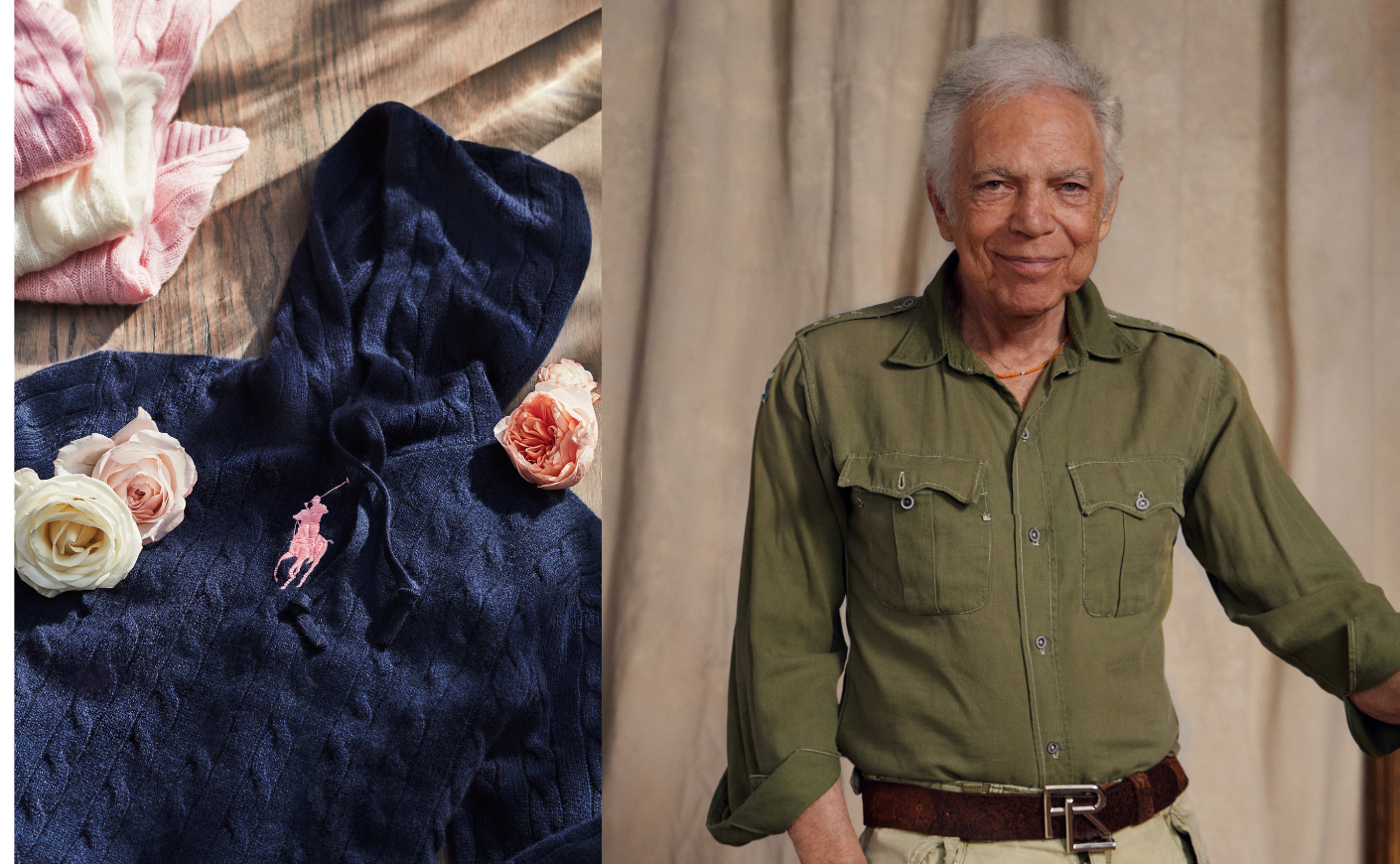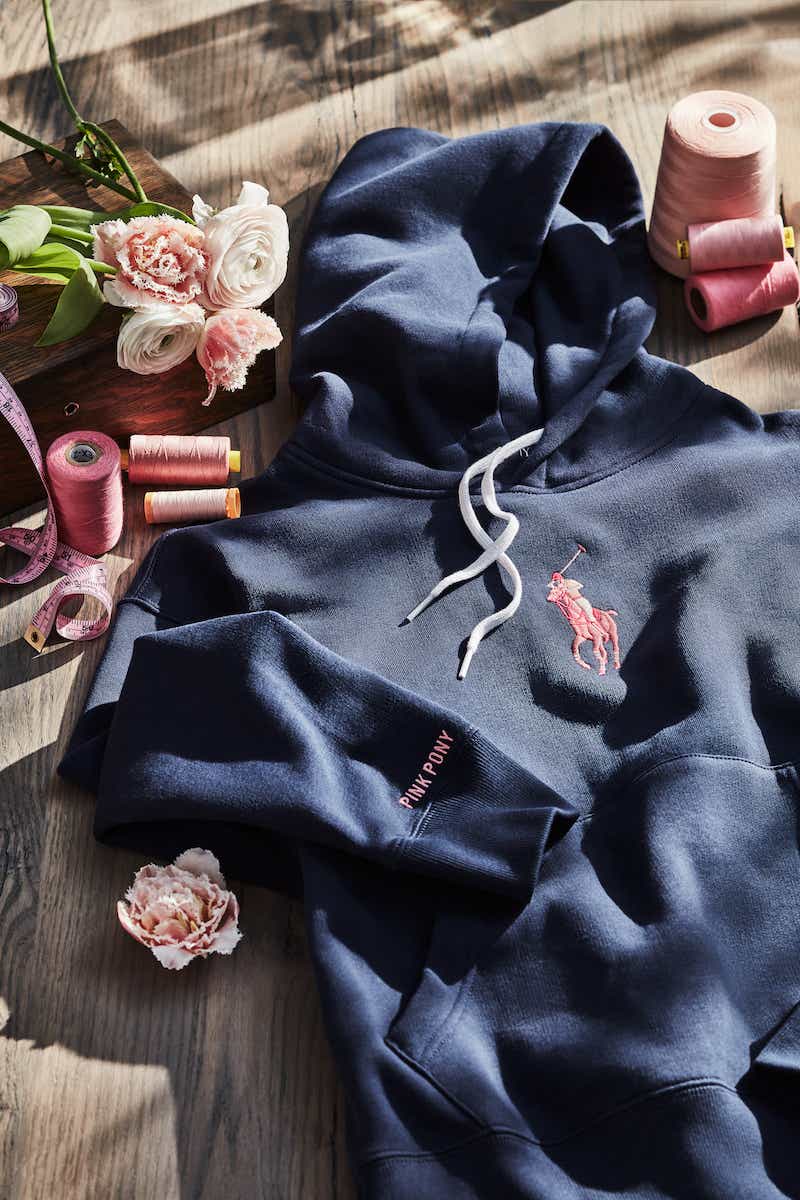Ralph Lauren is an instantly recognizable fashion label, thanks to its classic pony logo, but those of us in the fashion and cancer worlds recognize the brand, and the man behind it, for much more than that. Ralph Lauren himself has been working to raise awareness for breast cancer since 1989, when his personal health scare and friend’s breast cancer diagnosis inspired him to use his platform for good. At the time, his brand's efforts were focused on breast cancer awareness and research. But in 2000, the company launched the global Pink Pony Campaign, and the mission evolved to include other screenable cancers with a focus on research, screenings, early diagnosis, treatment, education, and patient navigation.
At that time, Lauren started to see the disparities in cancer care and prevention and became passionate about closing the gap. Founded in 2001, his Pink Pony Fund aims to help underserved communities across the United States access quality treatment at an earlier, more curable stage.
In May 2022, the Ralph Lauren Corporate Foundation committed $25 million to expand or establish five Ralph Lauren-named cancer centers focused on breaking down barriers to treatment and care in disenfranchised communities. Earlier this month, the foundation announced it would open The Ralph Lauren Center for Cancer Prevention at USC Norris.
We recently spoke to Lauren in honor of Breast Cancer Awareness Month. In our exclusive interview, he reflects on his personal ties to the cause and the collection's evolution, from the inaugural Pink Pony T-shirts gracing the runway to global Pink Pony Walks, underscoring the brand's commitment to raising visibility and dispelling the stigma surrounding the need for extra support.
Why have you been so committed to breast cancer research for so long? What got you interested in the issue?
When my friend, Nina Hyde, who was the fashion editor of The Washington Post at the time, told me she had been diagnosed with breast cancer, I wanted to help. I had recently suffered a brain tumor and though it was thankfully benign, I felt Nina’s pain and anxiety. I felt like there must be something that I could do. I told her I would help her and I went to the fashion industry through the CFDA and said this must be our fight. We were united on this goal and created an initiative — Fashion Targets Breast Cancer. This was over 30 years ago. It was a different time and cancer was not talked about the way it is today. I had the opportunity to help raise awareness, provide support, and help those with cancer, which led me to establish the Nina Hyde Center for Breast Cancer Research in Washington, D.C.
Tell us about some of the things that have been built through your initiatives.
The more I learned, the more I understood the importance of early diagnoses and treatment, not just for breast cancer, but for other cancers as well. I also saw that, for too many people across America, access to care wasn’t easy. Twenty years ago, we launched a significant partnership with Memorial Sloan Kettering to open the first Ralph Lauren Center in Harlem. This year, we opened our second Center in Washington, DC, and next year, we’ll launch our third in Los Angeles. Each of these centers sits in the heart of communities that need support the most. But our efforts extend beyond the United States. We work with cancer-fighting organizations in 18 countries.
In all the designs you've created to raise money for cancer programs, is there one that sticks out in your memory? Do you have a favorite?
That first moment we sent models down the runway in our Pink Pony T-shirts was really special. It was an incredible opportunity to raise awareness and visibility. Cancer was not glamorous, but by putting the conversation front and center, we could help people feel more supported, and feel less alone. Nothing like that had been done before. At that moment in 2000, we officially launched our Pink Pony campaign, which our company observes each October with many different events and experiences for both our employees and customers. I especially love our employee Pink Pony Walks that take place all over the world. They kick off our October observance of Breast Cancer Awareness Month in a very personal way.
Cancer is such a draining, unglamorous experience, but you’re known for bringing your signature style to everything, including your Pink Pony collection. What do you hope people feel or get out of these pieces?
When people wear the Pink Pony Collection, I hope they feel a sense of confidence and pride, and know they’re taking a small, but visible and meaningful, action to raise awareness.
Your work in Harlem is so important. You seemed to recognize health disparities before everyone started talking about that problem. How did you realize that? What sort of work do your centers do or hope to do about reducing the stigma surrounding a diagnosis or needing special services?
Growing up, I remember my mother had a health scare of her own. She didn’t know where to go for help and felt uneasy going outside of her community to find it. That stuck with me. I didn’t want others to feel that fear and uncertainty.
I was fortunate to meet Dr. Harold Freeman more than 20 years ago, who, at the time, was president of North General Hospital and medical director of Sloan Kettering’s Breast Examination Center of Harlem. He has devoted his life to understanding cancer disparities. He knew and worked in the community and understood the many barriers to care people in Harlem faced. He had a vision of how to provide support that would be the most impactful — it centered around patient navigation. Getting screened can feel scary; getting the diagnosis is even more overwhelming. But when you have a support system around you, that makes all the difference. It could be as simple as having help with transportation to appointments, childcare, or access to nutritious meals.
These sound like small things, but they can change lives. This is why we’ve focused our work on centers that provide services focused on the specific needs of the community.
Your centers don’t just focus on breast cancer. And so many cancers are under-researched and under-funded. What are some of the areas of cancer you’re particularly passionate about these days?
From our work in Harlem and beyond, we know that early diagnosis makes a difference in outcomes. We expanded the focus beyond breast cancer to other forms of screenable cancers. When you look at the underserved communities we’re working to support, they’re often impacted by certain forms of cancers at a rate far higher than many other communities. Our efforts are designed to help change that and with the help of the amazing teams in our centers, we’re making our patients and their families feel they’re truly cared for, that they truly matter.
As I’ve said many times, when someone we love has cancer, we’re all affected — husbands, wives, mothers and fathers, sisters, brothers, and friends. We’re all in this together.










